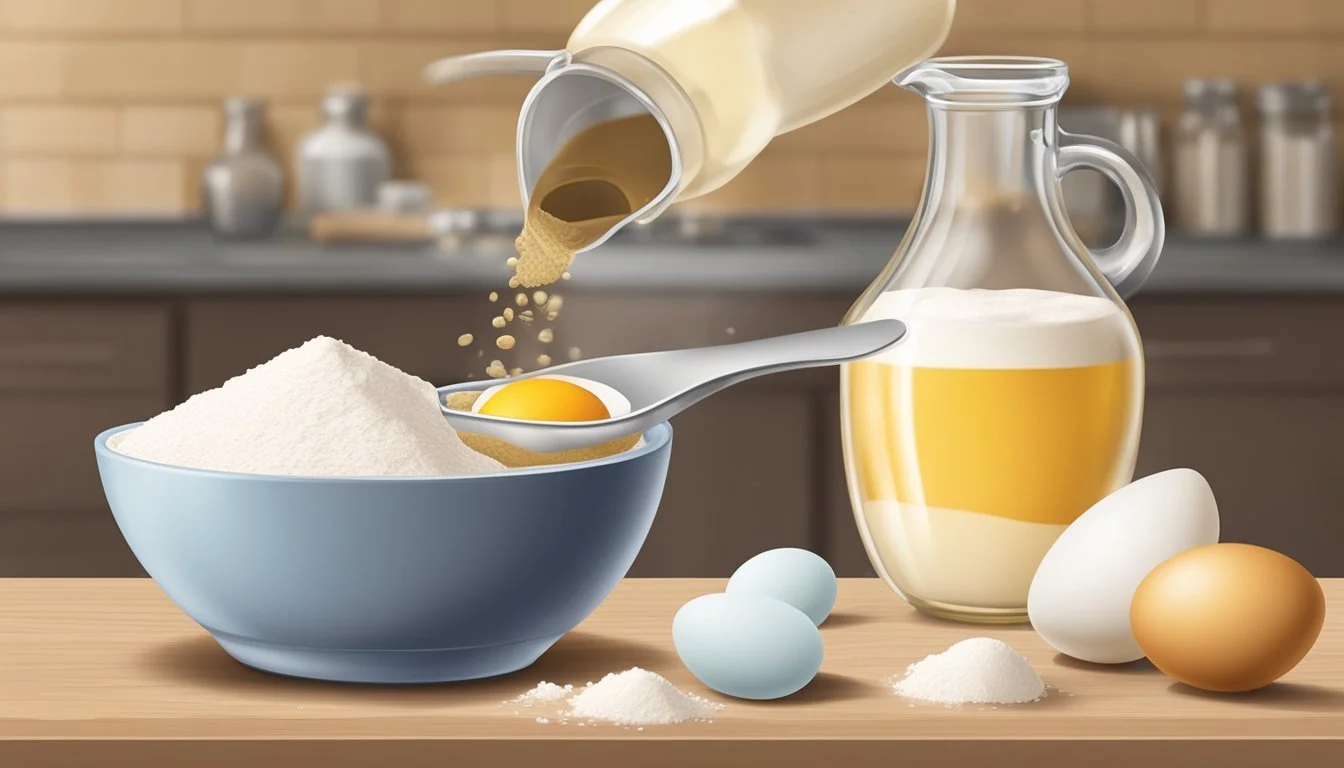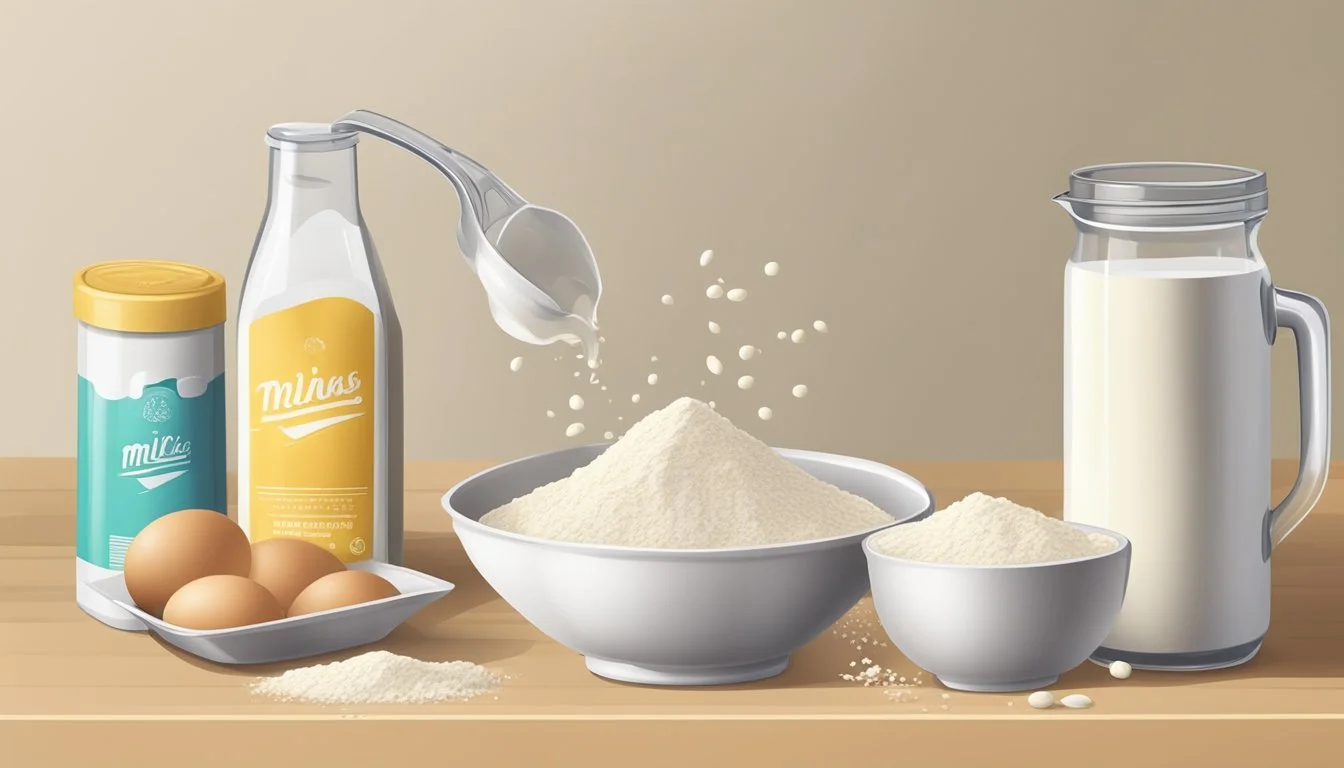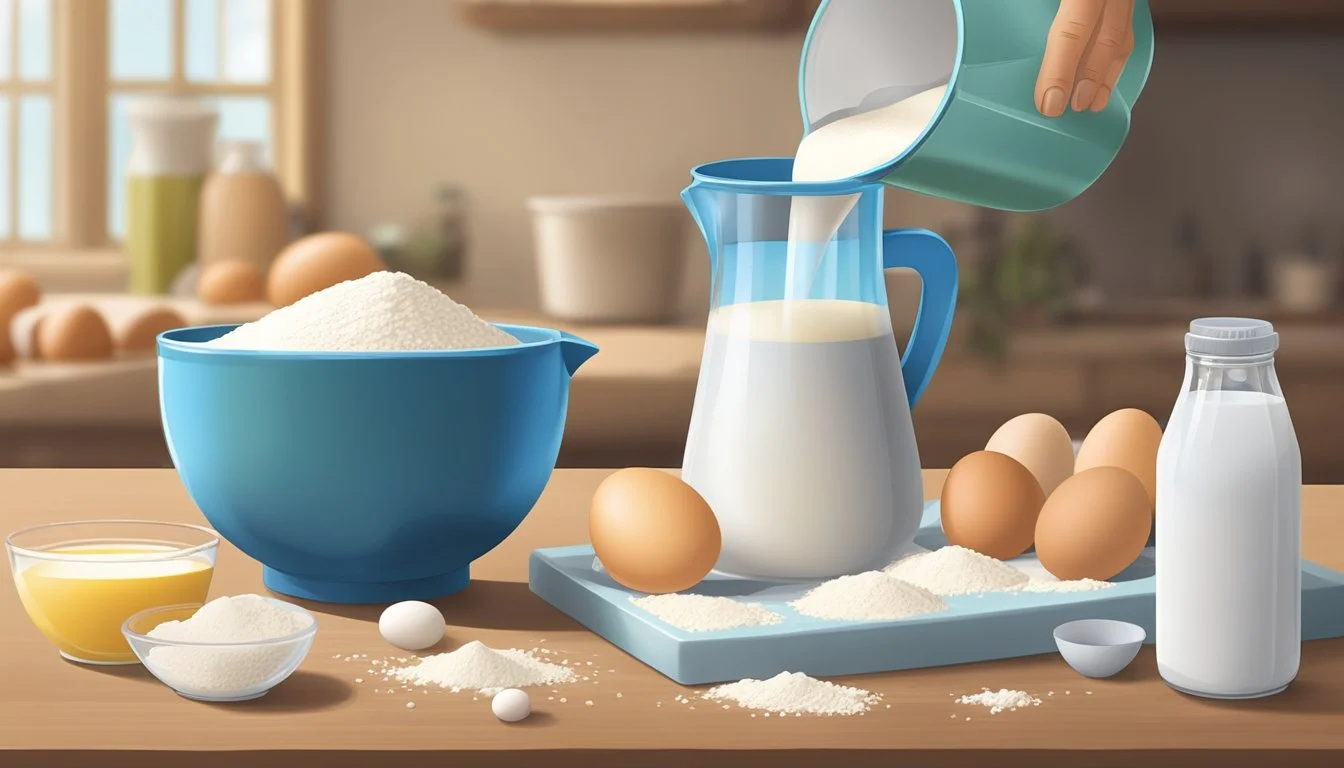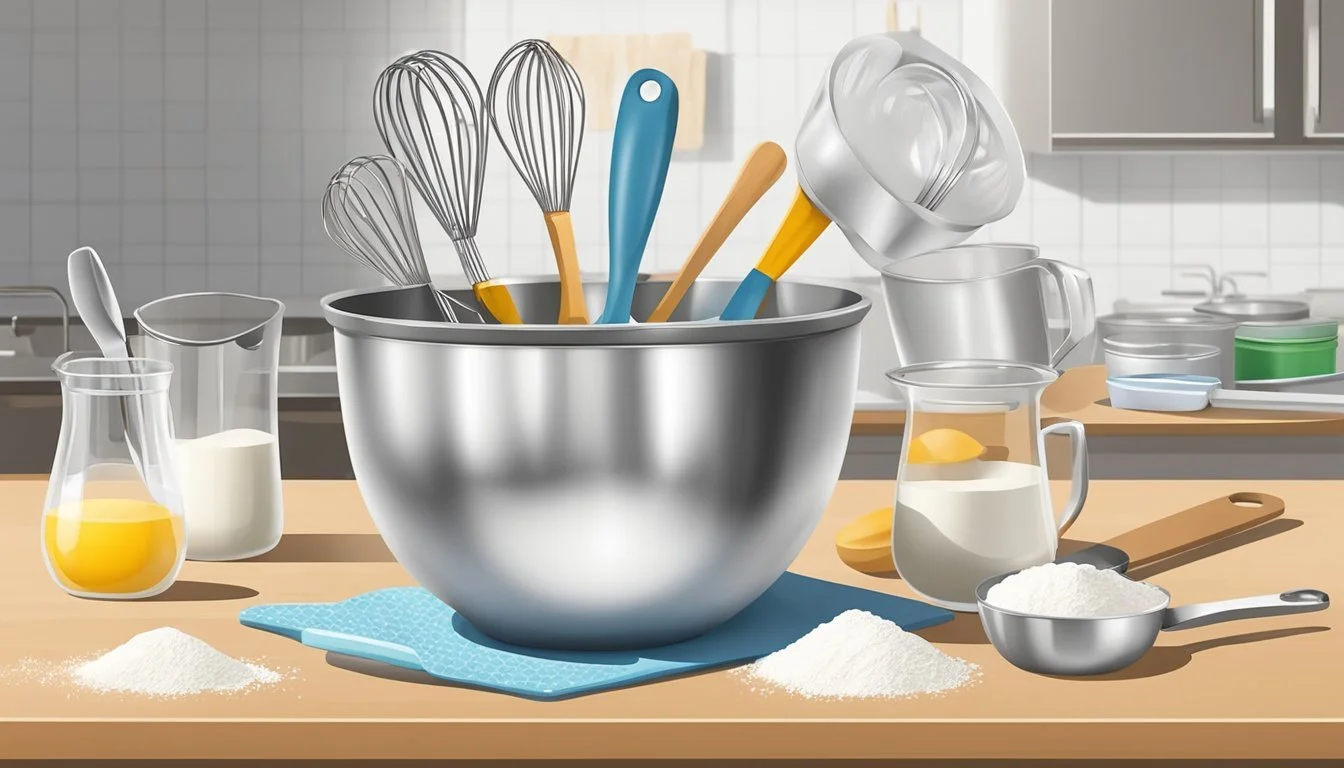How to Measure Ingredients for a Homemade Pancake Filling
Precise Techniques for Perfect Results
Creating the perfect homemade pancake filling starts with precise measurement of ingredients, ensuring that every bite is as delightful as the last. Pancakes are a staple breakfast dish enjoyed by many, and the filling can transform them from simple to sublime. The key to success lies in the balance of flavors and textures that come from accurately scaling your components. A homemade pancake recipe is nothing without its filling—be it fruit compote, cream cheese, or chocolate spread—which complements the fluffy texture of the pancake itself.
Measuring ingredients for pancake fillings should be approached with the same care as one would for the pancakes. This ensures the filling harmonizes with the pancake rather than overwhelming it. Whether it’s a sweet or savory filling, the use of measuring cups and spoons is crucial for consistency. The precision of measurement impacts the moisture balance and density of the filling, which ultimately affects how it interacts with the pancake.
Homemade pancakes offer a canvas for culinary creativity, and the filling is an integral part of the recipe that can make or break the dish. They rely on the meticulous combination of ingredients, similar to the pancakes they accompany. Understanding the ratio of dry to wet ingredients is essential, especially since the filling typically needs to have the right thickness to stay within the confines of the pancake without causing sogginess. Accurate measurement paves the way for a texture that complements the tender, fluffy nature of homemade pancakes, resulting in a successful and satisfying meal.
Understanding the Basics
In making a homemade pancake filling, understanding the foundational elements of pancake batter creation is essential. This section guides you through critical components, from the roles of individual ingredients to various mixing techniques, ensuring your pancakes turn out perfect every time.
Components of Pancake Batter
The basic components of pancake batter include flour, baking powder, salt, sugar, milk, and eggs. All-purpose flour is typically used for its versatility, but whole wheat flour or a combination of flours can also be used to alter the nutrition and texture.
Role of Ingredients
Flour: Provides structure.
Baking Powder: Acts as a leavening agent, contributing to fluffiness.
Salt: Enhances flavor.
Sugar: Adds sweetness and helps with browning.
Milk: Contributes to the batter's liquidity and richness.
Eggs: Bind ingredients together and add stability.
Selecting Correct Measuring Tools
Precision is paramount in baking. Use dry measuring cups for flour and sugar, and liquid measuring cups for milk. Measuring spoons are essential for smaller quantities like baking powder and salt.
Accuracy in Measurement
Ensure measurements are exact—spoon and level for dry ingredients and use a clear measuring cup for liquids placed on a flat surface at eye-level to check accuracy.
Alternatives and Substitutions
Buttermilk: For tanginess; can substitute with milk plus vinegar or lemon juice.
Flax Egg: A vegan alternative to eggs.
Oats: Can replace some flour for texture.
Unsalted butter: Preferable for control over salt content, can use salted butter or oil if necessary.
Importance of Ingredient Ratios
Ratios impact the final pancake's thickness and texture. Too much flour leads to dense pancakes, while excess liquid can result in runny batter. Follow the recipe's prescribed ratios for the best results.
Mixing Techniques
Combine dry ingredients and wet ingredients separately before mixing together until just combined. Overmixing can deflate the batter, leading to less fluffy pancakes.
Adjusting for Altitude
High altitudes require adjustments in baking powder and liquids due to pressure differences. Decrease the amount of baking powder and possibly increase the liquid to compensate for quicker evaporation.
By meticulously selecting the correct tools, carefully measuring ingredients, and understanding the function of each component within the batter, one can avoid common pancake mistakes. Choose ingredients with purpose, measure with precision, and mix with care to ensure homemade pancake fillings are both delicious and correctly proportioned.
Preparing Your Ingredients
A flawless pancake filling begins with meticulous ingredient preparation. Precise measurements and correct ingredient temperatures are pivotal for the desired consistency and flavor of the batter.
Ingredient Preparation
Dry Ingredients:
Measure flour by spooning into a measuring cup and leveling off with a knife for accuracy.
Sugar, whether granulated or another variety like brown sugar, should be packed or spooned depending on the recipe's instructions.
Commonly required dry additives include baking powder, baking soda, salt, and spices like nutmeg or cinnamon.
Wet Ingredients:
Milk should be at room temperature to ensure even mixing.
Eggs, typically large ones, must be fresh. Crack them separately before adding to avoid shell fragments.
For butter, unsalted is often recommended for controlled seasoning. If using salted butter, adjust the salt in the recipe accordingly.
Vanilla extract enhances flavor; pure extract provides the best taste.
Table of Key Measurements:
Ingredient Measurement Note Flour 1 cup, spooned and leveled Granulated Sugar 1/2 cup, packed or spooned Based on recipe Large Egg 1, cracked separately Unsalted Butter To recipe, melted or softened Control salt by using unsalted Milk To recipe, room temperature Ensures smooth incorporation Vanilla Extract 1 teaspoon, pure if available Flavor enhancement
Combining Wet and Dry Ingredients
Dry Mix: Begin by whisking all dry ingredients together to ensure the leavening agents, salt, and sugar are evenly distributed.
Wet Mix: Whisk wet ingredients like milk, eggs, and melted butter until they're fully combined and airy, which contributes to lighter pancakes.
Combination Tip: Make a well in the center of the dry ingredients and pour the wet mixture in. Gently fold to combine, ensuring the batter stays lumpy. Overmixing results in dense pancakes.
Incorporating Mix-ins
For berry-filled pancakes, fold in blueberries or other berries carefully to prevent bleeding.
Chocolate chips or chunks can be added to the mixture for indulgent chocolate chip pancakes.
For banana or pumpkin pancakes, mash the fruit and incorporate it into the wet ingredients before mixing with the dry.
If making lemon ricotta pancakes, add lemon zest and a pinch of nutmeg to the dry ingredients, then mix the ricotta smoothly with the wet ingredients before combining.
Note: Add mix-ins like nuts or fruit after combining the wet and dry ingredients to ensure even distribution and to prevent sinking to the bottom of the batter.
Cooking the Pancakes
Cooking perfect pancakes involves selecting the proper cookware, managing heat correctly, and targeting the desired browning. Each step is critical to achieve that ideal stack of pancakes ready for butter and maple syrup.
Choosing the Right Cookware
The choice of cookware significantly affects the outcome of pancakes. A nonstick pan or griddle is ideal for even heat distribution and preventing sticking. For those who have an electric griddle, it offers a large surface area, allowing multiple pancakes to be cooked simultaneously.
Nonstick Pan: Ideal for home use, requires less oil or butter.
Griddle: Great for larger batches, retains heat well.
Electric Griddle: Offers temperature control, which can be set to a consistent heat.
Regulating the Temperature
Maintaining the correct temperature is key to cooking pancakes without burning. For electric griddles, preheating to a temperature between 375°F and 400°F usually yields the best results. If using a non-stick pan or frying pan, medium heat works well. It's important to let the pan or griddle heat up before adding the batter.
Medium Heat: Necessary for stovetop pans to achieve golden brown pancakes.
Preheat: Essential for ensuring the cookware has reached the ideal temperature for cooking.
Achieving the Perfect Brown
The telltale signs of a ready-to-flip pancake include bubbles forming on the surface and a dry-looking edge. The pancakes should be golden brown when flipped. To aid browning and prevent sticking, lightly brush the cookware with butter, although this may be optional if using a high-quality non-stick surface.
Golden Brown: Flip the pancake when the underside is this color.
Bubbles: Indicates the top side is cooking and it's nearing time to flip.
To dress the finished pancakes, classic toppings include butter and maple syrup, but one can get creative with fruits, nuts, or sauces. Always serve immediately for the best taste and texture.
Serving and Toppings
The serving of pancakes is almost as important as their preparation, with the choice of toppings enhancing the overall breakfast experience. It's essential to select accompaniments that complement the flavors and textures of the homemade pancakes.
Traditional Toppings
Maple Syrup: A classic choice, genuine maple syrup provides a rich and authentic sweetness that is synonymous with traditional pancake breakfasts.
Butter: A pat of butter melting atop a stack of pancakes adds a creamy richness that pairs perfectly with the sweet syrup.
Whipped Cream: For a lighter topping that still provides creaminess, whipped cream is a delightful option.
Berries: Fresh blueberries, strawberries, and raspberries introduce a tart contrast to the sweetness of the pancake and its syrups.
Nuts: Adding chopped nuts like almonds, pecans, or walnuts offers a crunchy texture and a nutty flavor that complements the soft pancakes.
Creative Topping Ideas
Chocolate Chips: Incorporating chocolate chips into or on top of pancakes adds a gooey and decadent twist to the classic breakfast.
Fruit Compotes: Cooked fruit mixtures can be spooned over pancakes for a warm and comforting addition.
Flavored Syrups: Beyond maple, offering a variety of syrups such as blueberry, strawberry, or even spiced syrups can take pancakes to a new level of flavor.
Pancake Syrup Alternatives: While maple syrup is traditional, sometimes alternatives like honey, molasses, or agave nectar can offer a different kind of sweetness that appeals to different palates.
Toppings not only add flavor but also a visual appeal that can make pancake breakfasts more enticing. When serving, one should consider both the taste and the presentation.
Nutrition and Dietary Considerations
When preparing homemade pancake fillings, considering the nutrition and dietary needs of consumers is vital. An individual may review nutrition information to make informed decisions, whether for calorie tracking, dietary restrictions, or health preferences.
Whole Wheat Flour: A healthier alternative to all-purpose flour, whole wheat flour adds fiber and nutrients to pancakes, making the dish heartier and more nutritious. Substituting whole wheat flour can benefit those seeking whole grain options.
Simple Ingredients: Utilizing simple and pure ingredients allows for more control over the nutritional content of pancake fillings. This means avoiding unnecessary additives and preservatives, thus aligning with a clean eating approach.
For those with specific dietary preferences such as veganism, here is a basic guideline for ensuring vegan pancakes:
Ingredient Vegan Alternative Milk Plant-based milk Eggs Applesauce, banana Honey Maple syrup, agave
To achieve fluffy pancakes, one does not need to compromise on dietary needs. Ingredients like baking powder and baking soda are key leavening agents that contribute to a fluffy texture without altering nutritional values significantly.
It's also important for individuals with dietary restrictions to scrutinize labels for potential allergens or cross-contamination warnings if using store-bought mixes or ingredients.
By tailoring the filling ingredients to nutritional requirements and dietary choices, one can enjoy homemade pancakes that are not only delicious but also tailored to individual health needs and preferences.
Storing and Reheating
When preparing a homemade pancake filling, maintaining freshness and taste upon storage and using appropriate reheating methods are crucial to enjoy a just-made experience.
Storage Solutions
For storing pancakes, one should wrap them tightly to prevent exposure to air. It is advisable to use plastic wrap or aluminum foil, then place them in a freezer-safe bag or container. Pancakes stored this way can last up to three months. If using a boxed pancake mix with preservatives, pancakes may have a slightly longer shelf life, but one should still adhere to similar storage methods to maintain quality.
Refrigerator: Up to 2 days wrapped tightly
Freezer:
Up to 1 week in a refrigerator-safe container
Up to 3 months in a freezer-safe bag with air removed
Best Practices for Reheating
To reheat pancakes, one should aim to restore the original texture and warmth without drying them out or making them soggy. Here are tailored instructions based on different kitchen equipment:
Oven:
Preheat to 350°F (175°C).
Place pancakes in a single layer on a baking sheet.
Cover with foil to retain moisture.
Heat for 5-10 minutes.
Toaster:
Place pancake in toaster and heat for 1-2 minutes. For frozen pancakes, add an extra 30-60 seconds.
Stovetop:
Add a small amount of butter to a skillet and heat over medium.
Once butter is melted, add pancakes to the pan.
Reheat for 2-3 minutes on each side until warm.
Air Fryer:
Preheat to 350°F (180°C).
Arrange pancakes in a single layer.
Heat for 2 minutes, flip, then heat for an additional 1-2 minutes.
Using these storage and reheating methods, one can ensure that make-ahead pancakes taste as delightful as when they were first prepared.
Advanced Tips and Common Mistakes
Measuring ingredients for a homemade pancake filling can make the difference between a delightful breakfast and a culinary misstep. Precision and attention to detail are crucial in achieving delicious, fluffy pancakes.
Advanced Preparation Tips
Advanced preparation can significantly reduce the total time spent making pancakes. For cooks with an eye on speed and flavor, here are specific steps to take:
Make Ahead: Combine all dry ingredients the night before and store them in an airtight container. This will shorten prep time in the morning.
Ingredient Temperature: Ensure that eggs and milk are at room temperature to achieve a more consistent batter.
Troubleshooting Common Errors
Even experienced bakers can encounter issues when preparing pancake fillings. Identifying and correcting common errors is crucial:
Over-mixing: Stir the batter until just combined; over-mixing will lead to dense pancakes.
Proper Measurement:
Use measuring cups and spoons for accuracy.
Level off dry ingredients with a knife to avoid excess.
Stale Leavening Agents: Use fresh baking powder or soda to ensure a good rise.
Cooking Temperature:
Preheat the skillet or griddle to a medium temperature before pouring the batter.
A properly heated surface ensures even cooking without burning.
By applying these targeted tips and solutions, cooks can avoid pitfalls and create perfectly textured fillings for their pancakes.
Recipe Variations
When customizing pancake fillings, the key is to maintain the balance of flavors and textures while catering to different tastes and dietary restrictions. The choices range from hearty whole wheat options to decadent chocolate chip additions, all of which transform the basic pancake recipe into something uniquely satisfying.
Flavor Adaptations
To create fluffy pancakes with a twist, one might consider adding fresh or frozen blueberries for a burst of fruitiness. Blueberry pancakes are a classic choice and require gently folding in 3/4 cup of blueberries into the batter. For a sweet treat, chocolate chip pancakes can be achieved by sprinkling 1/2 cup of chocolate chips onto the batter just before flipping. For a more autumnal flavor, one can incorporate 1/2 cup of pumpkin puree and a teaspoon of pumpkin pie spice into the mix for pumpkin pancakes.
For those craving a tangy yet rich option, lemon ricotta pancakes can be made by adding the zest of one lemon and 1/2 cup of ricotta cheese to the batter. To attain the classic tang and richness of buttermilk pancakes, substitute regular milk with an equal amount of buttermilk. Here's a quick ingredient guide for flavor adaptations:
Flavor Ingredients Quantity Blueberry Blueberries, fresh or frozen 3/4 cup Chocolate Chip Chocolate chips 1/2 cup Pumpkin Pumpkin puree, Pumpkin pie spice 1/2 cup, 1 tsp Lemon Ricotta Lemon zest, Ricotta cheese 1 lemon, 1/2 cup Buttermilk Buttermilk in place of milk
Modifying for Different Diets
For those following a healthier diet or with dietary restrictions, pancakes can easily be tailored. Whole wheat pancakes provide a more nutritious option by simply substituting all-purpose flour with whole wheat flour. The nutritional information is enhanced without compromising taste.
For a vegan diet, vegan pancakes are possible with a few simple replacements: use almond or soy milk in place of dairy milk, a flax or chia egg instead of a regular egg, and a plant-based butter substitute. Incorporating mashed bananas can not only replace the egg as a binder making for scrumptious banana pancakes but also adds natural sweetness and moisture.
To ensure that all ingredients align with dietary preferences, it's advisable to make a homemade pancake mix with simple ingredients and full control over what goes in. Here's how one can modify their pancake recipe:
Dietary Need Substitutions Vegan Plant-based milk, Flax/Chia egg, Plant-based butter Whole Wheat Whole wheat flour in place of all-purpose flour Added Nutrition Add mashed bananas for moisture and sweetness
By considering these variations, one can produce a wide array of pancake flavors and styles to please any palate or dietary requirement.
Conclusion
Accurate measurement of ingredients is key to achieving the perfect homemade pancake filling. Precision ensures consistency and optimal flavor. When it comes to making an easy recipe for pancakes at home, one must adhere strictly to the specified quantities.
For dry ingredients like flour and sugar, a kitchen scale delivers the best precision, but if one is not available, spooning ingredients into a measuring cup and leveling it off is the next best alternative. Wet ingredients such as milk or oil should be measured using a clear measuring cup designed for liquids to ensure the meniscus, or the curved surface, aligns with the measurement marking.
Here are a few additional tips to ensure the best pancakes:
Before measuring, ensure all ingredients are at the recommended temperature, as some may expand or contract.
Invest in quality measuring tools; they are a small but vital investment in the outcome of your recipes.
Level off dry ingredients with a straight edge for greater accuracy, avoiding the temptation to pack them down.
By following these straightforward guidelines, one is more likely to reproduce a consistently high-quality pancake every time. Remember, small deviations can lead to noticeable changes in the texture and taste, so measure carefully. Enjoy the process and look forward to the delicious homemade pancakes that await as a result of attention to detail in measuring.










